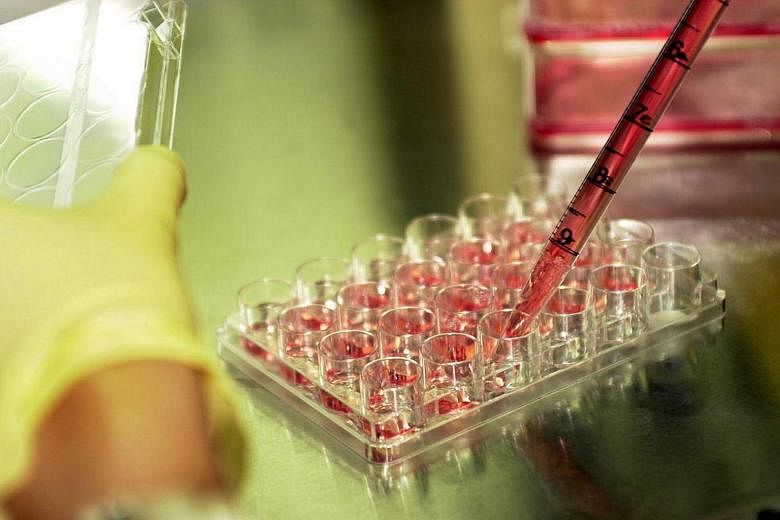Humanity has come a step closer to engineering its own evolution, not through the selective breeding advocated by the eugenics movement a century ago, but by using new scientific powers directly to edit human DNA in reproductive cells.
An international panel of scientists and ethicists, brokered by the United States' National Academy of Sciences, concluded last week that changing heritable aspects in human genes would be permissible under certain conditions.
Although stringent regulatory oversight would be required - gene editing should be used only to prevent the inheritance of serious diseases where no alternative method would work - their review went further than any previous mainstream group in endorsing the long-term aim of producing gene-edited babies.
What many scientists saw even a year ago as a red line that should not be crossed, on both practical and ethical grounds, is turning orange.
The review will encourage experiments to discover how to edit the human germ line (reproductive cells) safely and effectively; the DNA could in principle be changed in an early embryo or in sperm or eggs before fertilisation.
For instance, Dr Kathy Niakan and her colleagues at the Francis Crick Institute in London recently began to use genome editing to investigate how a fertilised human egg develops into an embryo, and similar work is under way in China.
Three related technologies are advancing at extraordinary speed to make possible ultra-precise manipulation of the genome.
Most attention has gone to the DNA editing process known as Crispr (clustered regularly interspaced short palindromic repeats - pronounced "crisper").
Crispr is adapted from a natural process that bacteria use to remove unwanted viral DNA from their genome. It allows scientists to add, subtract and change DNA with a precision and speed that was impossible with older methods of genetic engineering.
Thousands of laboratories have adopted Crispr in fields from agriculture to medicine, unfazed by a battle between Massachusetts Institute of Technology (MIT) and the University of California, Berkeley, over patent rights.
(A court ruling last week makes it more likely that MIT will win.)
Crispr depends on two other fields that are moving almost as fast.
One is DNA sequencing, which reads out all three billion biochemical letters of an individual human genome in a few hours for less than US$1,000 (S$1,420), providing a genetic script for editing.
The third technology is the use of microscopic manipulators that enable researchers to hold and engineer single cells.
The idea that scientists might apply their new skills to alter the human genetic inheritance for medical purposes has provoked some alarm that this would be a step on the notorious "slippery slope" to "designer babies", created not to be free of disease but to have superior intellectual abilities or physical appearance.
In fact, it may be impossible to draw a firm line between using genome editing for "therapy" and "enhancement". For example, genetic technology developed for the prevention of inherited blood disorders might lead to athletes with superior endurance.
The slippery slope argument would have to be convincing to justify a ban on technology that could help carriers of genetic disease to have healthy children.
Although many inherited disorders could be prevented by pre-implantation diagnosis (in which embryos undergo DNA testing to exclude those with defective genes), for others, genome editing may be the only hope.
As Professor Eric Lander, head of Boston's Broad Institute, told me: "The way to prevent a slide down the slippery slope is to build a broad social consensus about what is and is not acceptable, and then enforce it. A rogue clinic misusing genetic engineering will not change the world. What matters is what society as a whole does."
The most powerful reason for proceeding with caution towards germ-line gene editing is the risk of unintended consequences for the health of future generations.
Because the process is likely to be irreversible, much more research will have to be done with cell cultures, laboratory animals and non-implanted embryos to demonstrate long-term safety before clinical trials can be authorised.
Molecular biologists must engage with politicians and the public, so that when they believe it is time to go into the clinic, a regulatory framework is in place.
A possible model is the recent UK debate that ended with approval of "mitochondrial donation", a simpler technique designed to overcome inherited defects in the body's energy metabolism by replacing small amounts of DNA outside the cell's nucleus.
The debate about genome editing must be global and regulations will require worldwide coordination.
Encouragingly, China is to host a big international meeting on human gene editing. Given the pace of progress and the warming of public opinion towards new reproductive technologies, it will not be many years before humanity begins to engineer genetic diseases out of our biological inheritance.
FINANCIAL TIMES

